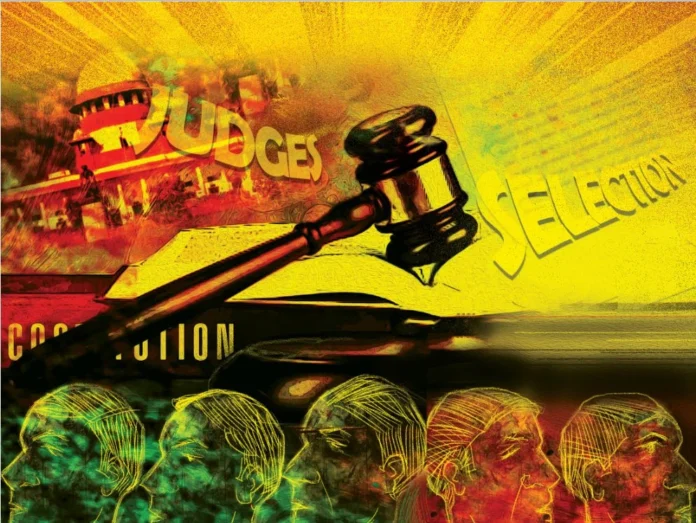By Dilip Bobb
As is customary, the Collegium recommended the names, and the Union government confirmed them just three days later—something of a record, given the law ministry’s reputation for delaying appointments. The Collegium, presently headed by Chief Justice BR Gavai and comprising Justices Surya Kant, Vikram Nath, JK Maheshwari, and BV Nagarathna, has seen its choices endorsed swiftly. The judges elevated have strong reputations, but the criteria applied in their selection remains under scrutiny.
THE COLLEGIUM’S CRITERIA
Under former Chief Justice DY Chandrachud, the Collegium laid down explicit factors for recommending names:
- Seniority.
- Merit (measured by judgments delivered and personal probity).
- Integrity.
These obvious requirements were supplemented with more nuanced factors:
- Ensuring diversity in terms of region, gender, and community.
- Inclusion of marginalised and backward groups.
Additionally, an eight-page Supreme Court document detailed further considerations: fair representation to High Courts, inter se seniority, merit, integrity, and the disposition rate (volume and quality of judgments delivered).
Yet many of these principles appear inconsistently applied. For instance, after Justice Bela Trivedi’s retirement, Justice BV Nagarathna is now the sole woman judge on the Supreme Court bench. Justice Ahsanuddin Amanullah is the only Muslim judge, and Justice PB Varale will remain the only Dalit judge after CJI Gavai retires.
Gender diversity remains a glaring gap. In 1989, Justice M Fathima Beevi broke the barrier as the first woman judge of the Supreme Court, while in 1991, Justice Leila Seth became the first woman chief justice of a High Court. Over three decades later, progress has been dismally slow. Just last week, on August 30, 2025, the Supreme Court Bar Association passed a resolution expressing concern over the “disproportionately low” representation of women judges.
A SYSTEM OF PRECEDENTS AND PITFALLS
The Collegium system itself has a complex judicial history. The Second Judges Case (1993) established it, and the Third Judges Case (1998) expanded it into a five-member body. These rulings emphasised consultation and collective decision-making.
Yet, challenges persist. In some instances, there is simply no “fit” candidate available from a High Court, or objections are raised by one or more Collegium members. Dissent is not uncommon. Justice Nagarathna herself objected to Justice Pancholi’s proposed elevation, warning it would be “counterproductive” and undermine credibility—especially as he would have become chief justice of India between October 2031 and May 2033. She argued that this superseded 56 senior judges, including Justice Lisa Gill, whose appointment would have advanced gender representation.
Regional balance remains skewed. Punjab and Haryana High Court currently has three judges in the Supreme Court, while several states—Jharkhand, Meghalaya, Odisha, Sikkim, Tripura, Jammu and Kashmir, and Ladakh—have had no representation in recent years.
Attempts at reform have faltered. Parliament’s National Judicial Appointments Commission (NJAC) Act of 2015, designed to replace the Collegium, was struck down by the Supreme Court as unconstitutional in the Fourth Judges Case. While reaffirming the Collegium, the Court invited suggestions for greater transparency, including a permanent secretariat to vet candidates.
NEPOTISM, BIAS, AND REFORM
The system is not free from criticism. Justice Chelameswar, in his NJAC dissent, called the Collegium “a euphemism for nepotism” that promoted mediocrity. His blunt words were echoed in the historic 2018 press conference, where he and three fellow judges accused then CJI Dipak Misra of undermining judicial propriety.
Another long-standing criticism is that Collegium members favour High Court judges over members of the Bar. Only nine judges—including Rohinton Nariman, Indu Malhotra, and KV Viswanathan—have ever been elevated directly from the Bar.
Despite these criticisms, successive CJIs—Chandrachud, Sanjiv Khanna (briefly), and now Gavai—have attempted to restore institutional credibility. Justice Surya Kant, in line to succeed Gavai next November, has already emphasised that Supreme Court judges must act as “friend, philosopher, and guide” to lower courts. If he carries that philosophy into the Collegium’s functioning, it could help redress long-standing imbalances.
For now, the system continues, filling vacancies and keeping the machinery of justice moving—but leaving unaddressed the larger questions of diversity, fairness, and transparency.
—The writer is former Senior Managing Editor, India Legal magazine


